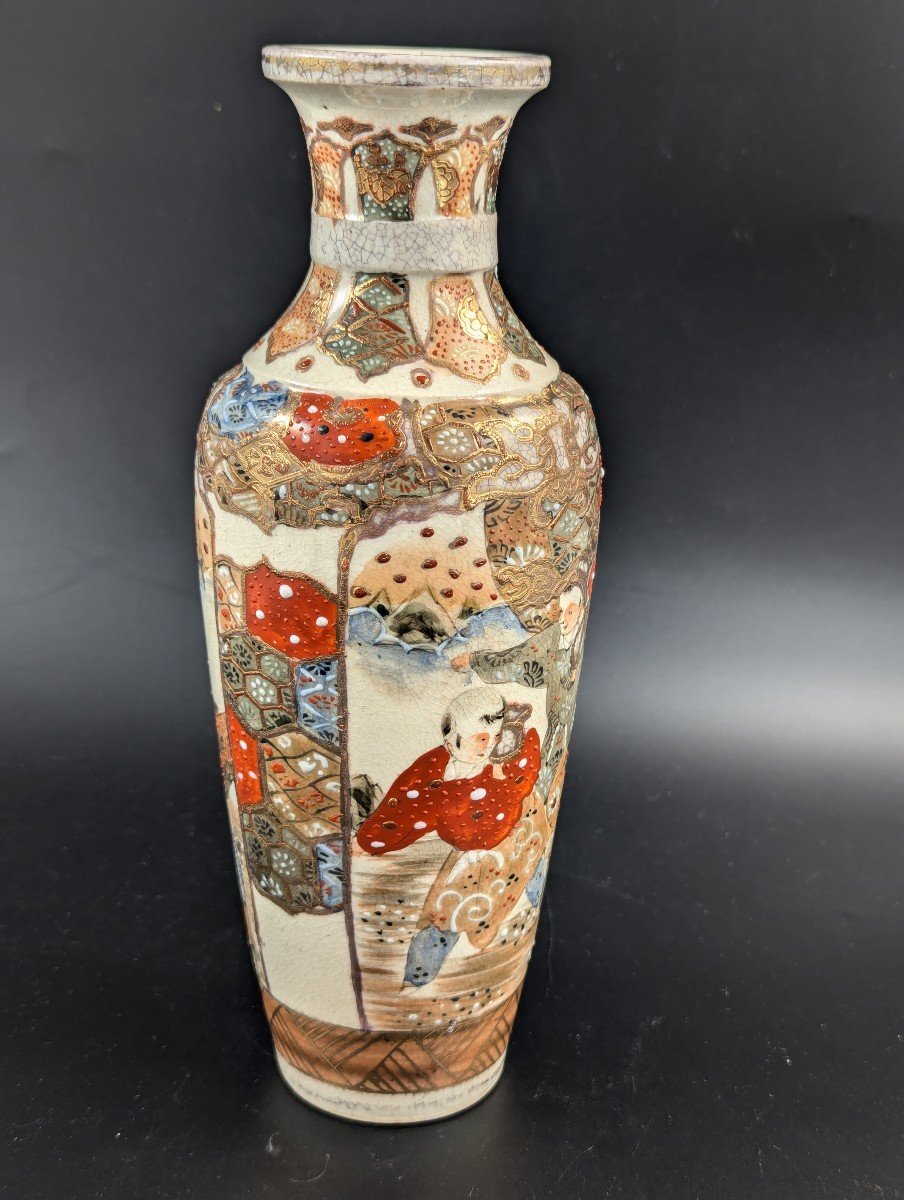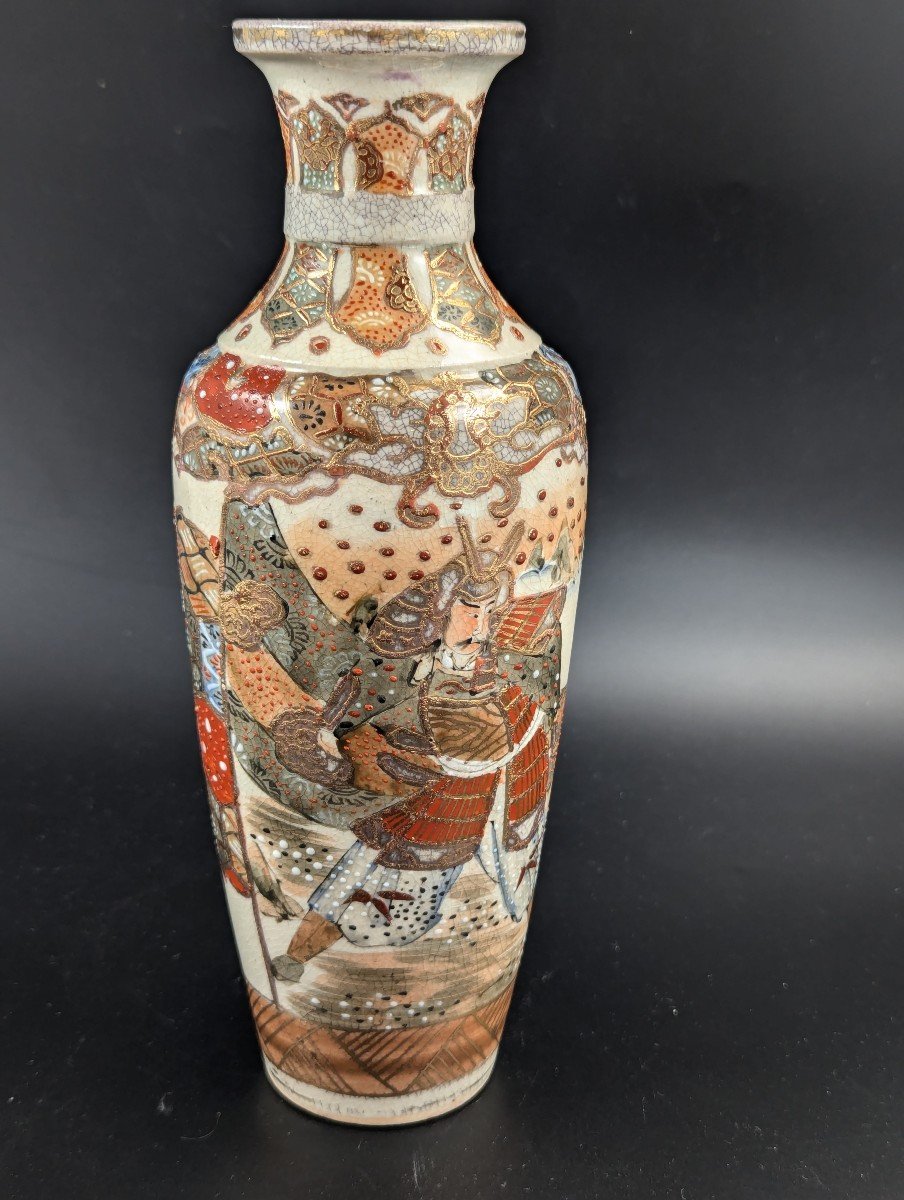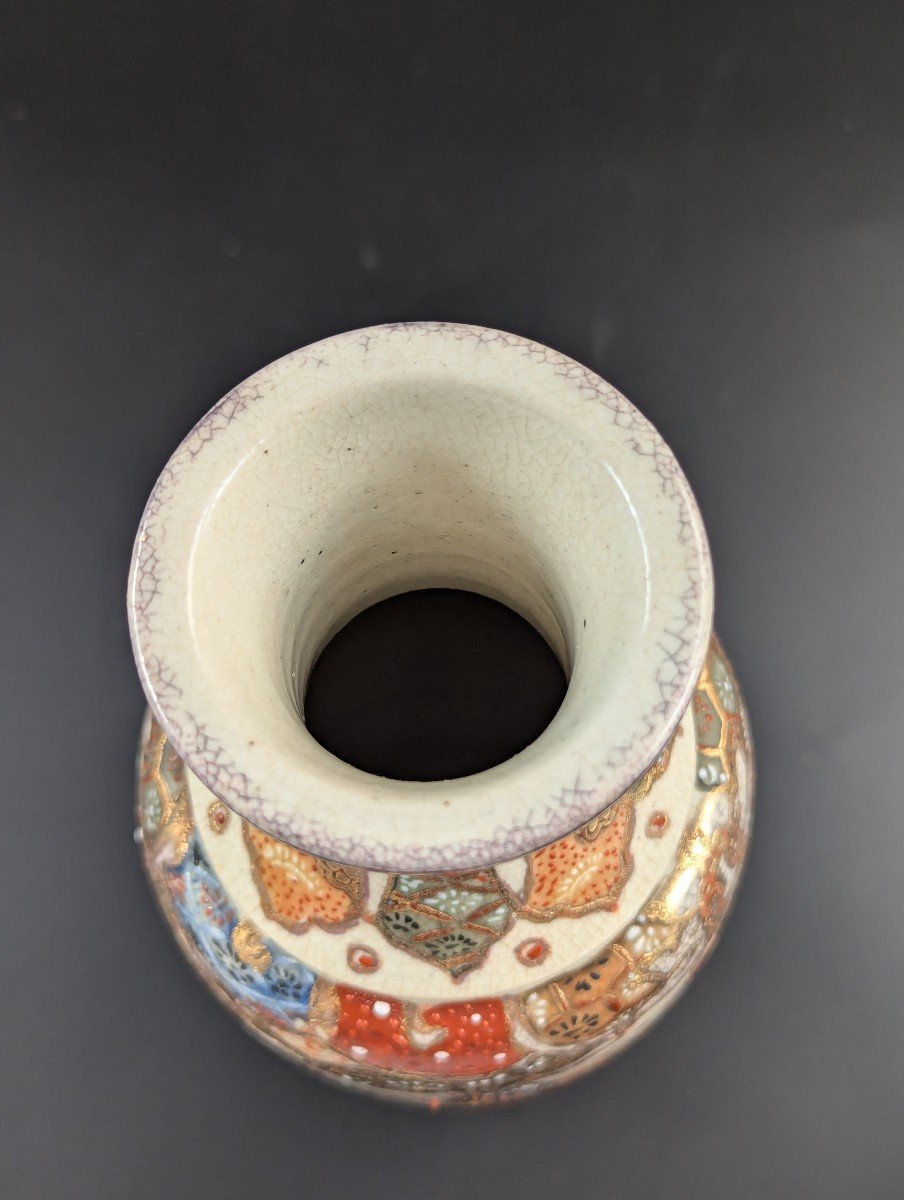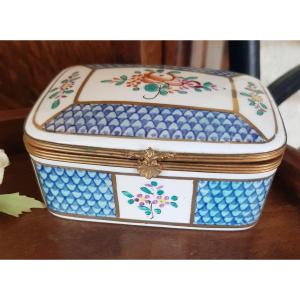Satsuma ware has a long history, dating back to the late 16th century when the first kilns were established in the region. Initially, the pottery was simple and utilitarian, but under the guidance of the Shimazu family, it evolved into a refined art form in the late 17th century. The family encouraged the production of high-quality ceramics as a means of bolstering the local economy. Satsuma potters began experimenting with new designs and techniques, leading to the creation of a wide range of ceramics, from tea bowls and sake cups to more elaborate vases and figurines. During the Meiji period (1868-1912), Satsuma ware gained widespread popularity both in Japan and internationally, thanks to government efforts to promote Japanese goods abroad. The pieces exported during this time were often decorated with lavish gold and silver and featured traditional Japanese motifs, such as cherry blossoms and chrysanthemums. Today, Satsuma ware is still produced in Kagoshima prefecture and other parts of Japan, and it remains highly prized for its intricate designs and rich history, with modern interpretations continuing to incorporate both traditional and contemporary themes.
Dimensions: height 24.5 cm, diameter of the wide part 9 cm, weight 566 grams.
Condition: slight loss of gilding on the rim and on the circumference at the bottom. Cracks on the enamel. Otherwise excellent antique condition.
Please study the accompanying photographs carefully, as they form an integral part of this description. The item will be shipped with full tracking and insurance. Shipping costs include labor, packaging, and postage.
















































 Le Magazine de PROANTIC
Le Magazine de PROANTIC TRÉSORS Magazine
TRÉSORS Magazine Rivista Artiquariato
Rivista Artiquariato